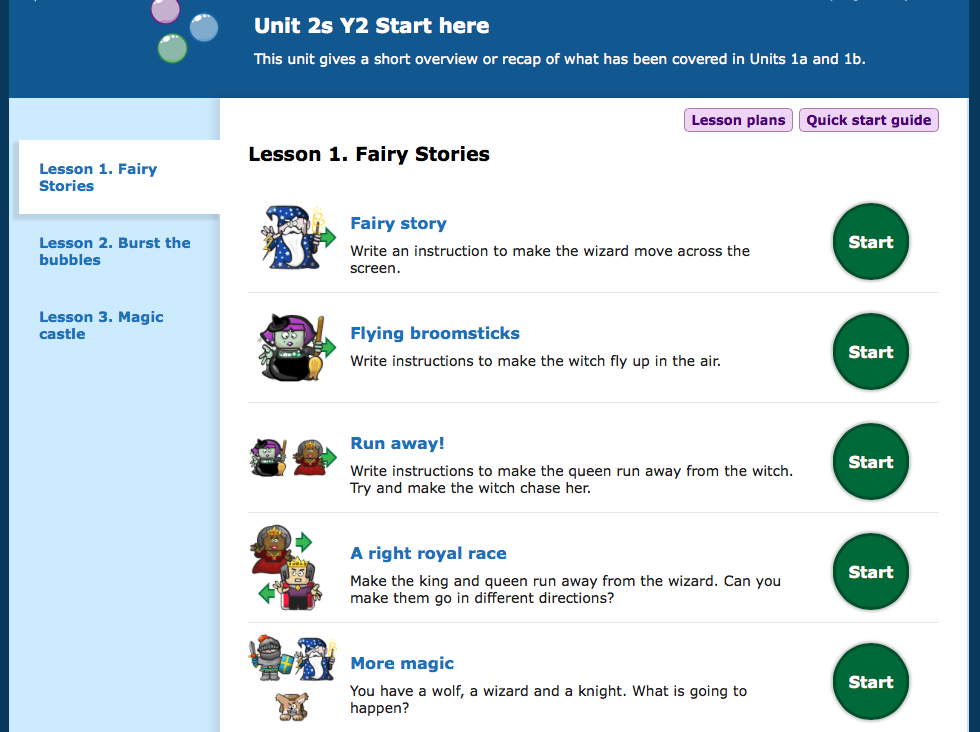We made the most of the Espresso coding resource whilst it was free for schools, then purchased it to complement existing resources and to support teachers to deliver certain aspects of the computing curriculum. We are very fortunate to have the Rising Stars Switched on ICT scheme, which supports teachers to use ICT creatively, but this makes sure that the coding aspects are covered, such as the first few bullet points of the computing curriculum at KS2:
Pupils should be taught to:
- design, write and debug programs that accomplish specific goals, including controlling or simulating physical systems; solve problems by decomposing them into smaller parts
- use sequence, selection, and repetition in programs; work with variables and various forms of input and output
- use logical reasoning to explain how some simple algorithms work and to detect and correct errors in algorithms and programs
The Espresso Coding resource is split into year groups with a starter, and 2 units for each (apart from year 1).
 |
| Overview showing skills progression |
Once you have finished the starter units, there are a further 2 units with up to 7 sessions in each. With one session a week this resource will support over a term's worth of teaching. It really will support as well, because lesson plans and tutorials are provided.
When I introduced this to my year 2 class, I first let them explore the year 1 units. This is because they haven't seen them before and I want them to feel confident navigating around the resource. They have since been totally engrossed each time we have used this. What I really like is that at the end of each unit children get the opportunity to build their own app, using the skills they have learned in each unit. So, for year 2s, they get to decide what will happen to objects when they are clicked. The session at the end of unit 2b concentrates on debugging exercises, helping to cover the program of study at ks1 perfectly!
 |
| Choosing your characters and background |
With my year twos I have offered very little teaching input as I have been curious to see what they do independently. Certain children have needed support in the form of encouragement, though the majority have been able to navigate around the activities and solve them independently. I find that mixed ability pairing works well in these situations, though I have to monitor carefully that each child in the pair is working and understanding what they are doing. For trickier sessions and assessment, I split the class in half so that I can concentrate on more children.
Espresso Coding supports teachers to deliver the coding part of the curriculum and sits very well with other resources, like Kodu and scratch, because it makes sure that all skills are covered (the overview photograph above shows how the progression of skills are covered). It supports teachers because it is more structured and because the tutorials and lesson plans are helpful.
 |
| Tutorial videos |
 |
| Lesson plan |



No comments:
Post a Comment
Please be patient, your comment will be posted once moderated.